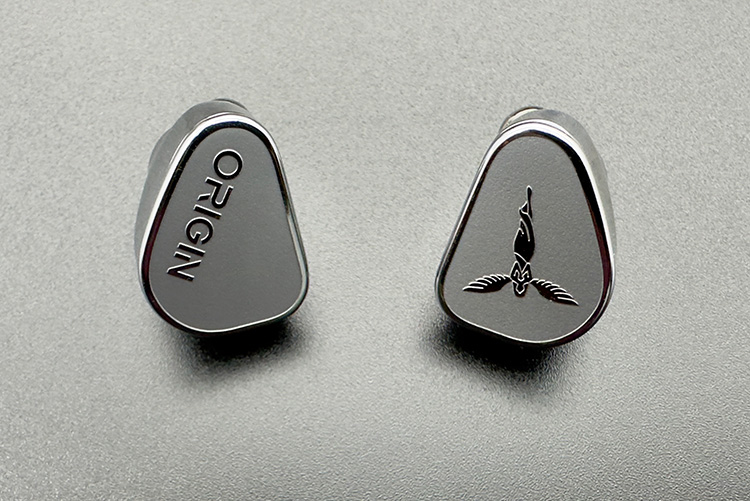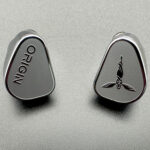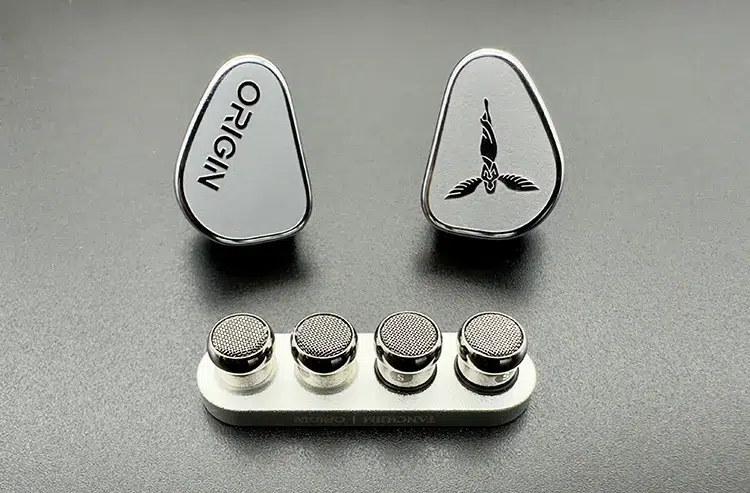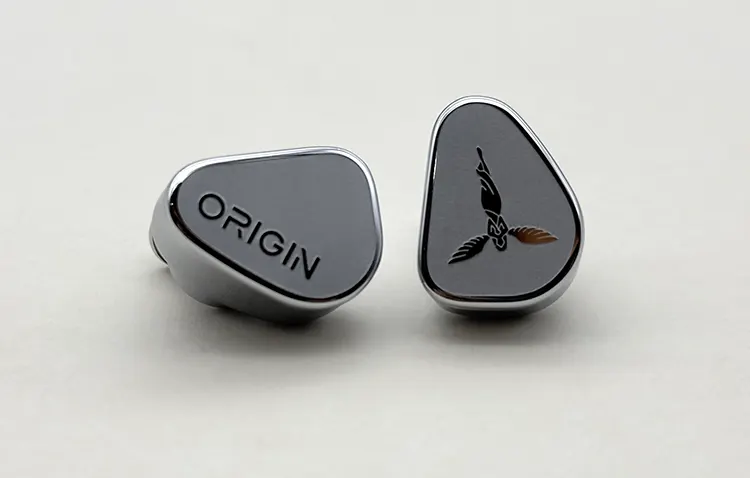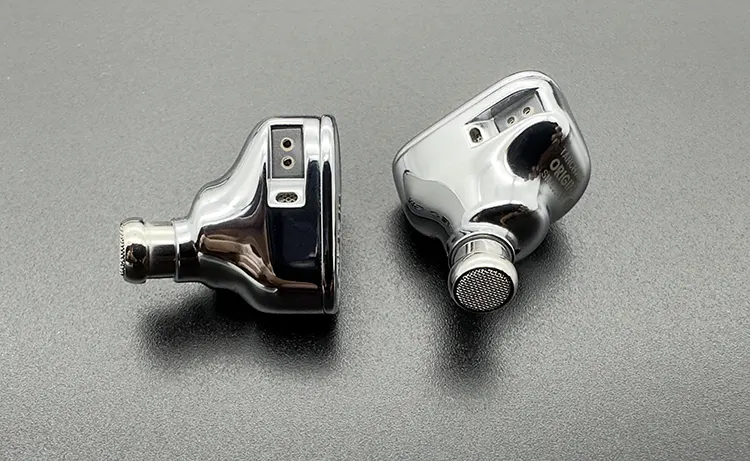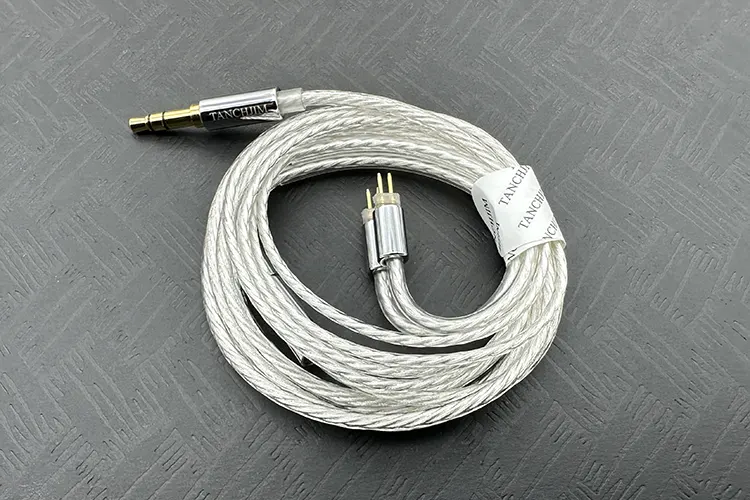In today’s feature, Nihal reviews the Tanchjim Origin, which is a single 10mm DMT 5th Generation Dynamic Driver universal in-ear monitor. It is priced at $259.99.
Disclaimer: This sample was sent to me in return for my honest opinion. Headfonics is an independent website with no affiliate links or services. I thank HiFiGo and Tanchjim for their support.
You can click here to learn more about the Tanchjim gear we have previously featured on Headfonics.
Note, that this post follows our scoring guidelines which you can read in more detail here.
With their impressive releases, Tanchjim has recently been making waves in the budget IEM market. Each of the recent releases has seen a commendable price-to-performance ratio.
The newest addition, Origin, is an immediate successor to their flagship iem, Oxygen, and sits above the likes of the recently reviewed hybrid multi-driver Kara.
With improved driver technology and a sleek design language, will Origin manage to leave a lasting impact? Let’s find out.
Tech Inside
Tanchjim Origin features an in-house developed 5th Generation DMT 10mm dynamic driver. The new driver is a patented dual-magnetic dual-cavity unit.
This driver has higher magnetic flux, lower distortion, and stronger dynamics. All these factors, when combined, eventually result in better timbre, more accurate sound position, and better separation.
The diaphragm on the drivers is designed with a focus on rigidity and flexibility to show more ideal vibration characteristics. There is an air vent of noticeable size, which, according to Tanchjim, helps with larger air permeability and ultimately expands the dynamic range of the IEMs.
The Origin has an impedance of 16Ω @1kHz and a sensitivity rating of 126 dB/Vrms making it an easy-to-drive IEM.
Design
Origin follows the typical Tanchjim design language. One can draw parallels from the design of previous IEMs – Oxygen, Hana, etc.
The design has a similar toned-down approach. The shells are made of stainless steel, have a mirror-like finish, and feel highly durable. Shells are on the smaller side.
I find the faceplate on Origin to be very simple yet quite artistic. The right shell has an angel logo embossed on the faceplate, while the left shell has the name Origin embossed on it. The Origin has one of the best designs in its price range.
The Origin’s nozzles have a wide bore on Origin but are not very long or short.
Comfort & Isolation
With its smaller shell, Origin is comfortable to wear. Since the nozzle has good length, the insertion is deep, giving a secure fit. They will not fall off easily. The long and wide nozzle may sometimes hurt the ear in longer sessions.
The isolation is just average, and with the right ear tips, some of the outside noise is blocked.
The weight may seem more because of the steel body and smaller size, but I did not find the weight to be an issue with putting these IEMs on for longer listening sessions.
The larger vent on the IEMs helps minimize the pressure buildup, so even in longer sessions, there is no pressure buildup issue. I also never noticed any driver flex on these IEMs.
Ear tips
The selection of ear tips for Origin is somewhat limited, offering only two types: one with a narrow bore and the other with a wide bore. I prefer the wide-bore ear tips.
The narrow bore sounds a bit constrained to my ears, so my preference is with the wide bore tips. However, it’s worth noting that these ear tips do not provide a particularly strong level of passive isolation.
I also paired them with the SpinFit W1 tips and Azla SednaFit light ear tips. Both of these tips go well with these IEMs. The wide bore on Azla opens up the sound, and the isolation is good with these ear tips.
Stock Cable
The cable that comes with Origin is a 3.5mm terminated, 2-pin cable. This cable is a high-purity 6N oxygen-free copper silver-plated cable. The cable is lightweight and does not tangle easily.
I am not quite fond of the thin build of this cable. For the price point, a better build cable is expected. The other gripe is that it only comes in a 3.5mm termination, and there is no option for a balanced 4.4mm.
Packaging & Accessories
The unboxing experience is nothing exceptional. We get the IEMs, a cable, two sets of ear tips in different sizes, a white carry case, and a manual. There is a distinct white theme that has been maintained throughout.
The white carry case is made of PVC leather and is rain-resistant. It has enough space to carry the IEMs. I am not particularly fond of an all-white case that could show scuff marks and dirt on the surface quite easily.
Sound Impressions
The following sound impressions of the Tanchjim Origin were completed using a mixture of my main source, Lotoo’s Paw Gold Touch, and occasionally the iPhone 14 Pro (with an Apple dongle). I paired the IEMs with stock cable and Azla SednaFit Light ear tips.
Replaceable Nozzles
Recently, I have seen quite a lot of IEMs equipped with multiple tuning nozzles. These nozzles provide users with the flexibility to customize the sound signature according to their preferences.
The Origin comes with three different nozzles. L-light, S-standard, and D-dynamic are the three nozzles. These nozzles have some inner geometrical differences, bringing out differences in sound. However, there is very minimal variance in the signature. One has to try hard to figure out the differences.
- L-nozzles have some treble taming, and the bass impact is a little less compared to the other two.
- S-nozzle is the default nozzle. This one has more bass than the other two.
- D-nozzles have an engaging nature with a little treble focus. It has the most energy of all in the upper mids region.
I used the S (standard) nozzle for my listening test. The set was burn-in for nearly 50 hours.
Bass
Bass on Origin is about both quality and quantity. While this is not a bass-head-level bass, the quantity is more than satisfactory. The bass is fast and has enough punch and impact. There is more focus on the sub-bass. Bass notes are well-defined and articulated; you would not find any muddiness here.
The bass does not have a long decay or reverberating nature. It is more about a fast attack that decays quickly. The bass is well-controlled and does not bleed into the midrange and upper-frequency ranges.
The clean nature of the bass and a decent bass body help in enjoying music from various genres, from jazz to vocals to fast rock songs.
Midrange
The first impression you get listening to these IEMs is the forward mids on them. The midrange is clean and detailed and has a touch of warmth to it. There is a decent weight in the notes. Overall, this rich midrange presentation offers an immersive auditory experience.
The upper mids have good energy, and they can be found bordering on peakiness without fully crossing the threshold. Some users may find it a bit sibilant, but the selection of ear tips and music library will have a role to play.
Treble
The high-frequency fairs well. The treble region is well extended and detailed, with excellent energy presence. It maintains balance, avoiding excessive sharpness or peakiness while retaining a good level of clarity and resolution.
It’s not overly bright; there is just a hint of it. On some not-so-well-recorded tracks, you may get some unpleasant peakiness, but there is nothing much to worry about.
The sound of cymbals and higher-frequency tones on string instruments has a good body, and they seem to dissipate fast. The nuances of high-pitched instruments, the crispiness, and the clarity are quite well conveyed.
Staging & Dynamics
Origin is a very competent pair as far as technicalities are concerned. The large vent mimics an open-back design, which typically creates a more spacious and natural listening experience compared to closed-back designs.
The soundstage on these IEMs is decent, with good width and height. There is a good sense of spaciousness.
The resolution is very decent, with nice detailing and clarity in sound. The imaging is very precise and realistic, and I can very easily perceive the instrument’s placement.
These IEMs boast impressive dynamics, delivering a wide range of frequencies with great coherency. Each element, including the bass, mids, and treble, stands out distinctly, contributing to an overall vibrant sound.
This ensures an engaging listening experience across a wide range of genres and musical styles.
Click on page 2 below for my recommended pairings and selected comparisons.

